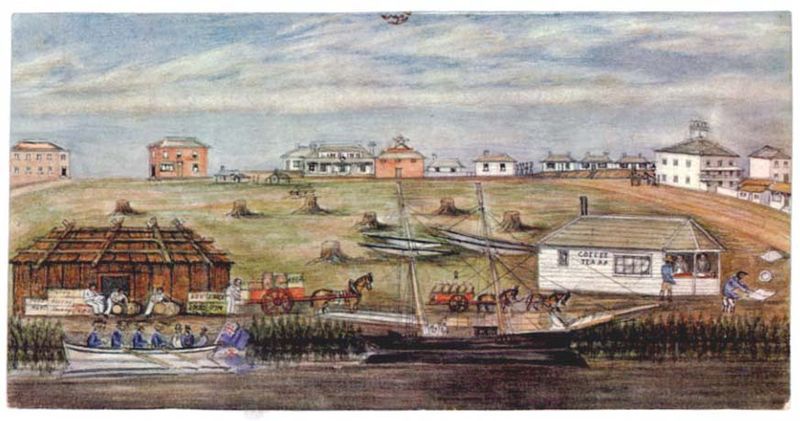All films change the facts. Cromwell (1970), Chariots of Fire (1981) and Ghandi (1982) all do this in various ways, some worse than others. The problem today is that there is such historical illiteracy that many people presumably think the film is the reality.
King Arthur has more written about him than just about any ruler of Britain and yet we really know next to nothing about him, or even if he ever existed. The current film King Arthur (2004) is introduced by a note that recent archaeological research has shed light on Arthur’s true identity. That is at best misleading. The film in fact adds its own mythology including some surprising historical blunders.
Essentially the film is about the Battle of Badon Hill, which the film dates to AD 467, near Hadrian’s Wall which separates the north of Britain (principally modern Scotland) from England. Arthur’s fellow knights are represented as Samartians (from the area of modern Ukraine – which is presumably why they cry ‘Rus!’ from time to time, if that’s what the shout is). From the film I wasn’t quite sure whether or not Arthur is supposed to be part British or not, but an ancestor is said to be a certain Artorius. Arthur and his friends are nearing the end of 15 years service in Rome’s military frontier in Britain, but before they receive their freedom they must rescue an important Roman family under threat from the brutal Saxons. The head of this family is an unlikeable adherent of the Pope. He tortures those Britons who don’t convert, including a certain attractive warrior damsel named Guinevere. Arthur rescues the tortured and in the end sides with the Britons against the Saxons. They are defeated and Arthur marries Guinevere.
It’s an entertaining version of the story. However, it is entertainment not history. The inscription ‘Artorius’ found in Tintagel in Cornwall, Arthur’s traditional birthplace, actually reads ‘Artognus’. The Sarmartians were not a Slav/Viking people like the Rus, who founded Russia, but Iranian. An important battle over the Saxons at Badon Hill has good claim to historical reality, although a date between AD 475 and 520 is the best guess, not 467 as in the film. Badon is often thought to have been in the region of Bath – a long way from Hadrian’s Wall – but no one knows for certain. The earliest reference is in Gildas (ca. AD 550) who says it occurred the year he was born (thus ca AD 500). He doesn’t mention Arthur at all; a certain Ambrosius is the leader of the victorious Britons.
Around 250 years later the Celtic monk Nennius, seeking to preserve the traditions of his people, credits Arthur with a succession of six victories over the Saxons with Badon Hill the climax. Geoffrey of Monmouth created the basic framework of the highly popular Arthurian legend while teaching at Oxford 1129-51. In 1191 the Glastonbury monks claimed to have found Arthur and Guinevere’s graves in the monastic grounds after a major fire in 1184. Fund raising for the rebuilding was aided and King Edward III established the Knights of the Garter, based on the legend, in 1384. Sir Thomas Malory (1405-71) further embellished the story in a brilliant work published by William Caxton in 1485.
If there is anything new in the film it is at least in the attempt to demythologise Arthur so that the monkish legends about a Holy Grail and the magical sword Excalibur do not feature. The view that the Saxons were defeated by the Britons led by some Roman soldiers could be true, and some theorists suggest that the stories of the Holy Grail had their origin in the eastern part of the Roman Empire.
Perhaps the most interesting part of the film is the way Arthur is represented as a person of less than clear Christian conviction, but of decency and concern for the freedoms of ordinary people. He has as his closest friend in Rome the British monk Pelagius, whom the film tells us died a year earlier (AD 466). Pelagius was indeed a real figure – a British monk of decent life but poor theology. He stressed man’s abilities rather than divine grace, but met his match in the great Augustine of Hippo (354-430). Pelagius’ views were condemned as heretical, but he himself was not put to death for heresy as the film makes out. As Pelagius’ dates are around 350-425, he does not match the setting given to Arthur a generation later in the film. Still, the choice is interesting, reminding us that every film-maker is seeking an audience. To make Arthur into the kind of hero that appeals to an age distrustful of institutions and addicted to democratic individualism is far more likely to produce the box-office dollars. Does it in a strange way aim to give hope that the Iraq war will be worthwhile in the end?
Whatever, Pelagius is indeed a picture of many moderns, but also of many in the Greek world of the New Testament age. But there’s an emptiness in the end in this philosophy. We need a better hope. And the Gospel of Jesus Christ provides just that – in the past but also in 2005 and beyond.
Initially published in The Presbyterian Banner, December 2004.
Last Updated on Wednesday, 03 November 2010 20:40

Comments are closed, but trackbacks and pingbacks are open.